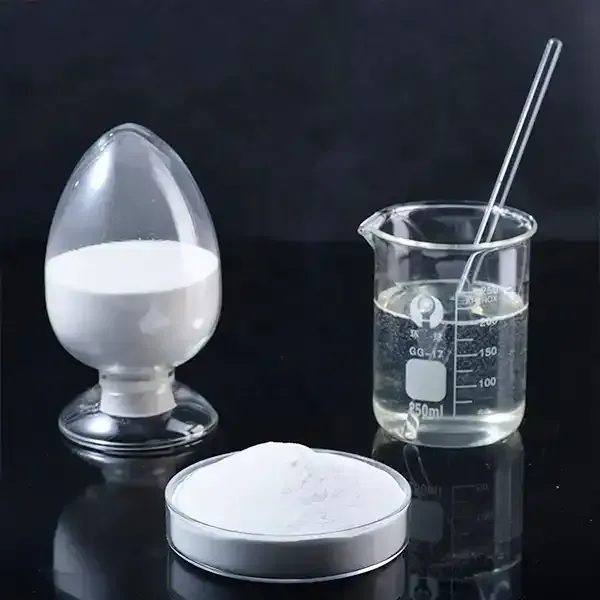Understanding Cellulose Ethers Properties, Applications, and Benefits
Cellulose ethers represent a significant class of compounds derived from cellulose, which is the most abundant organic polymer found in plant cell walls. Owing to their unique properties, cellulose ethers play an essential role in various industrial and consumer applications. This article delves into the characteristics, production methods, applications, and benefits of cellulose ethers.
What are Cellulose Ethers?
Cellulose ethers are cellulose derivatives in which hydroxyl groups (-OH) on the cellulose backbone are replaced by ether linkages. This modification alters the physical and chemical properties of cellulose, enabling a wide range of functionalities. Common types of cellulose ethers include methylcellulose (MC), hydroxypropyl methylcellulose (HPMC), and carboxymethyl cellulose (CMC).
Properties of Cellulose Ethers
The modification of cellulose into ether forms bestows several advantageous properties
1. Solubility Cellulose ethers are often soluble in water and various organic solvents, depending on their chemical structure. For example, methylcellulose is soluble in hot water, leading to gel formation upon cooling.
2. Viscosity These compounds can significantly increase the viscosity of solutions, making them valuable as thickening agents in several formulations.
3. Film-Forming Capability Cellulose ethers can form films and coatings, providing a protective barrier to underlying materials.
4. Stability They exhibit good thermal and chemical stability, making them suitable for diverse environmental conditions.
5. Texture and Mouthfeel In food applications, cellulose ethers can improve the texture and mouthfeel of products, enhancing consumer acceptance.
Production of Cellulose Ethers
The production of cellulose ethers typically involves the reaction of cellulose with various reagents in an alkaline environment. The cellulose is first treated to make it alkali-soluble, which is followed by alkylation or carboxymethylation with etherifying agents such as methyl chloride or propylene oxide. The resulting product undergoes purification, precipitation, and drying to obtain the final cellulose ether.
Applications of Cellulose Ethers
cellulose ethers

Cellulose ethers find extensive use across various industries
1. Food Industry In food production, cellulose ethers are used as thickening agents, stabilizers, and emulsifiers. They improve the texture of sauces, dressings, and ice creams while also helping to retain moisture and enhance shelf life.
2. Pharmaceuticals In the pharmaceutical realm, cellulose ethers serve as excipients in drug formulations. They are used to control the release of active ingredients, enhance the solubility of poorly soluble drugs, and provide a binding effect in tablets.
3. Construction In the building and construction sector, cellulose ethers are added to cement, plaster, and mortar formulations to improve workability and adhesion, while also providing water retention properties.
4. Personal Care Products Cellulose ethers are also prevalent in the cosmetics and personal care industry, used in lotions, shampoos, and dyes as thickeners and stabilizers.
5. Paints and Coatings The film-forming properties of cellulose ethers make them ideal for use in paints and coatings, as they provide better adhesion and durability.
Benefits of Using Cellulose Ethers
Cellulose ethers are preferred in various applications due to their numerous benefits
- Natural Origin Being derived from cellulose, they are considered safe and non-toxic, making them suitable for food and pharmaceutical applications.
- Biodegradability Cellulose ethers are biodegradable, which aligns with the growing demand for environmentally friendly materials.
- Versatility Their ability to be tailored for specific applications enhances their versatility across diverse industrial sectors.
- Cost-Effectiveness The raw materials used to produce cellulose ethers are abundant and often derived from renewable resources, leading to cost-effective manufacturing.
Conclusion
Cellulose ethers constitute a remarkable group of biopolymers with significant relevance in modern applications. Their unique properties make them indispensable in industries ranging from food and pharmaceuticals to construction and personal care. As sustainability continues to gain importance in product development, the demand for versatile and eco-friendly materials like cellulose ethers is expected to rise, fortifying their role in future innovations.
-
The Application and Significance of Construction RdpNewsMay.19,2025
-
Industrial Grade HpmcNewsMay.19,2025
-
Building Coating Adhesive Building Coating Adhesive HpmcNewsMay.19,2025
-
Application Of Hpmc For Detergent For Detergent In DetergentsNewsMay.19,2025
-
Application Of Hpmc Cellulose In Cement-Based MaterialsNewsMay.19,2025
-
Application Of High Quality Hpmc For Construction In The Field Of ConstructionNewsMay.19,2025




